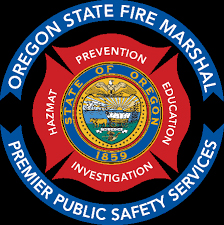It’s not unusual for Eugene Field Elementary School Principal Jennifer Hannan to blow a fuse a few times a week. And she’s not the only adult in the 92-year-old building to do so.
One staff member, who asked not to be named, said the school’s electrical system is “out-of-date and dangerous. I have blown fuses and had sparks shoot out of the wall at me.”
Classrooms have three electrical outlets, which means only six items can be plugged in at one time. Teachers unplug one item to use another.
“I have had circuits break in the teachers’ lounge multiple times. Any time you run too many electrical items at a time it blows,” first-grade teacher Lori Cremer said.
On a daily basis, Hannan and her staff are solving problems due to the limitations and condition of the building.
“Generally people don’t even report the issue because this is just life with a very old building and we are used to it,” Hannan said. “If there is water pouring in to a classroom, or the lights on one side of the building are out, or the Internet only works in certain classrooms … we call in help. But generally we just roll with it.”
Since October, the Silver Falls School District’s Long Range Facilities Committee has met to discuss the pros and cons of each of the district’s buildings and what should be the next step in planning for the district’s facilities. The group will present its recommendations to the Silver Falls School District Board on June 25.
Several members of the Eugene Field staff shared their concerns about the school with Our Town, stressing it isn’t an ideal building for educating 500 elementary students.
Challenges, staff members said, include leaks in the play shed, intermittent furnace failure, falling plaster, asbestos in the ceiling, floors and walls; mold, mice in the basement, no ventilation system, flooding and mold damage in the basement; a basement computer lab with only outside access, an upstairs area in the gym condemned 50 years ago with no access allowed, lack of parking, and a playground that is mostly blacktop.
“It’s not the best educational environment for kids,” Hannan said. “Teaching and learning are challenging enough without fighting the facility.”
Ideas under consideration by the committee include closing Eugene Field School. The public can attend the group’s next meeting at April 3, 7 p.m. at Silverton High School.
The committee is also discussing the ideas of creating one middle school and remodeling or tearing down the Schlador Street campus.
Silver Falls Superintendent Andy Bellando said with an old building comes some myths. He said there was no asbestos used when the school was built and that repeated air quality tests are negative, but bottom line, he said, the building is “old, outdated, worn out and in a poor location for the best interest of the students.”
“The Silver Falls School District continues to best address the aging needs of Eugene Field School through timely repairs, frequent air quality testing and other practices that prioritize the safety and well-being of students, staff and visitors,” Bellando said.
Community discussions have occurred since 1968 about discontinuing the use of the facility that house kindergarten through third grade education.
Hannan would like to have more laptops and iPads for students to use, but each addition requires updates to the Internet capabilities.
“This building was built before we used the technology we do now,” Hannan said. “It is very tricky and expensive to upgrade wiring necessary for the technology we need to utilize.”
The floor in third grade teacher Dorothy Ramig’s classroom is “so uneven that pencils will roll off desktops onto the floor.”
At her end of the building, there is one working water faucet for five classrooms of about 20 to 27 students each.
“We have three bathroom stalls for the girls and one stall does not flush properly and is often left filled with waste matter,” she said. “I believe the mold in this building causes illness for many students and adults. One day, I had a mom volunteer in the classroom. She started sneezing and couldn’t stop and had to leave the building.”
Several teachers emphasized the problems with the building have to do with its age and they praised the school’s janitor for working diligently to keep the building clean.
Cremer now teaches in a modular and doesn’t “plan to go back into the building.”
“Although the building is regularly tested for air quality, I have been much healthier outside of the building,” Cremer said. “Teachers inside must open two windows every day to keep airflow in the classroom at an acceptable level.”
Because the building lacks a ventilation system, teachers keep two classroom windows open at least two inches – regardless of weather conditions.
“The windows were recently replaced and are our main form of climate control and carbon dioxide monitoring,” Hannan said.
First grade teacher Angi Miller said an elementary school should be built to be child-friendly. From the asphalt playground to the steam radiators, Eugene Field isn’t best suited for young children.
“Children don’t have the chance to explore as much as we would like them to,” Miller said. “Teachers have to guide students away from the dangers in the building.”
Students can’t walk from their classroom to the bathroom or other rooms without an adult, because there is a concern they could walk out the door and onto a busy street, Miller said, adding children frequently get cuts and scraps from falling on the asphalt playgroud.
“For a school for young children, this facility doesn’t work anymore because it doesn’t allow kids to learn with current technology,” Miller said.
Only two classrooms have sinks, Miller said, adding sinks are a necessity in elementary classrooms. She said there are teachable moments her students miss because she has to walk students to the bathroom to wash their hands before lunch or after an art project. That’s time she could use to read to them or lead them in a game or song if there were a sink in her classroom.
“Not having a sink limits how I plan and if I can plan for creative, messier art projects,” she said, adding such projects help students develop their fine motor skills.
Hannan said having an old boiler system with radiant heaters in each classroom is “silly for small children. The radiators become hot and children get burned. In addition, we can’t have anything in classrooms too close, which creates space issues. The boiler sometimes leaks, shuts itself off, or needs repair. When the heat is working… it’s over 85 degrees at one end of the building and kids are wearing coats at the other end.”
Recently, Miller said, the temperature in her classroom was 80 degrees for a week, the next week it was freezing.
“I have four or five kids out with bronchitis after that,” she said, adding it’s a challenge for kids to concentrate on their studies when they are either too hot or too cold.
Cremer, Hannan, Miller and Ramig all said they don’t like to complain about the building, but feel it is important the public knows what they deal with on a daily basis. The staff expressed gratitude for the parents who have contributed in numerous ways to make the building work.
They invite anyone with questions to visit the school and see for themselves.
“We have to have facilities to help us do our job and not get in the way of doing it,” Miller said.
“It is not safe to remodel and needs to be replaced for the safety of the children and staff,” Cremer said.

